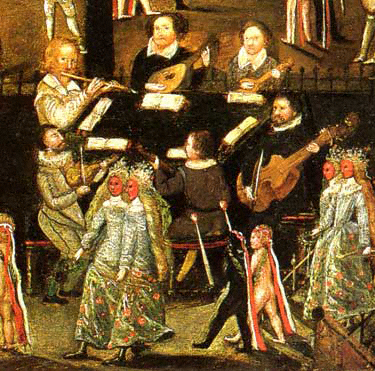

Neal Zaslaw described who was likely to play the violin during its early years:
During the first part of its meteoric career, the violin was played in public by formally trained professionals, servants, and illiterate folk musicians. Ladies and gentlemen, when entertaining themselves in private circumstances, preferred the elegant sounds of viols and lutes to the raucous power of brash fiddles. The violin appears first to have entered 'polite society' as a consort instrument.[28]
As Zaslow noted, during the 16th century playing the violin (including other members of the violin family such as the viola and cello) was primarily regarded as a trade, and well-bred amateurs favored instruments such as the viol. David Boyden referred to the lowly status of the violin during this period when he stated:
For the most part, reputable people and musicians in the sixteenth century thought of violins as instruments of lowly origin played mainly by professionals. In comparison, viols and lutes, both belonging to an older and more aristocratic tradition, were played not only by professionals but also by amateurs and gentlemen, who ardently admired these instruments. To play the viol or especially the lute was considered an admissible, even highly desirable, part of the general education of the well-born; and these instruments enjoyed a vogue among persons of social standing, who as amateurs generally regarded music as a commendable avocation, but not as a proper profession. The violin enjoyed none of this social prestige.[29]
© Copyright 2025 RK Deverich. All rights reserved.
Although this online violin class is provided free of charge, all rights are reserved and this content is protected by international copyright law. It is illegal to copy, post or publish this content in any form, and displaying any of this material on other websites, blogs or feeds is prohibited. Permission is given for individual users to print pages and perform music from this website for their personal, noncommercial use.